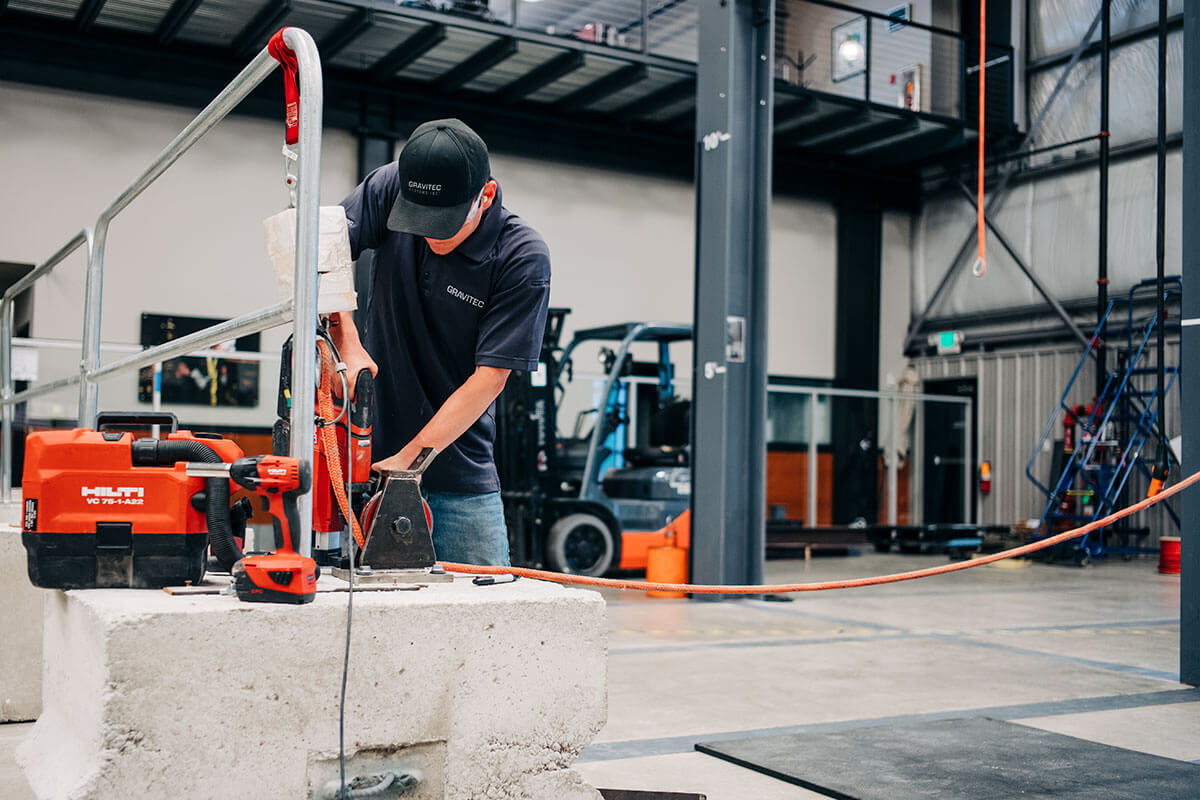Your cart is currently empty!
5 Core Tenets of Fall Protection

5 Core Tenets of Fall Protection
By Kevin Denis, Director of Special Projects
Gravitec has worked with employers for 35 years protecting their workers at height, long before OSHA had fall protection regulations and ANSI had standards. As I’m surfing the internet, I see blogs and articles titled, “Top Ten things to Know about Fall Protection” or “Questions to ask before Working at Height” and I figured I should put our two-cents in on this topic. Many of the writings are just a regurgitation of legal requirements like “pick a 5000 pound anchor” and “use compatible connectors”, which are accurate statements but do little for the user and less for the reputation of the writer. If I had to minimize the direction I would give to a worker at height (and their employer) and condense it into a few core tenets, it would come out something like this….
1. Don’t Work at Height: take a moment and ask yourself if there is some creative way to do the job differently. You (and your co-workers) know your job better than anyone else and if there is some creative way to avoid a fall hazard, do that.
2. Don’t Use PPE: if guardrails, nets, covers, walls, gates or any other barrier type protection will work, avoid harnessing up. There are several single points of failure with harness based systems and a heavy reliance on every person being on their A-game when using PFAS, which isn’t a concern with passive types of protection.
3. Buy Right: there are hundreds if not thousands of equipment options at every level of pricing. I’ve long stopped buying tools at dollar stores for a reason. You’re not really saving much by getting fall protection PPE on the cheap and that’s a strong statement about your safety philosophy. Buy from reputable manufacturers that put the effort into testing and quality of product.
Gravitec Hierarchy of Fall Protection poster. Buy your poster here.
4. Read the Instructions: I’ve made a career of reading product instructions and repeating those instructions to people during training events. Training is important as students have an opportunity to use PPE, ask questions, see the product in use, but all the technical content to understand PPE is in the instructions. Once a person understands a little bit about fall distance, weight and deceleration the use of PPE (any PPE) makes sense.
5. Be Pro-active and not Re-active: if your fall protection “program” is limited to buying PPE and putting staff through some level of training, it’s predictable that you will have issues in time. Be pro-active and work to eliminate fall hazards (see #1), limit purchases of different pieces of PPE, create consistent and accurate training, build guardrails or fixed systems in areas with high frequency of use, develop a reasonable rescue plan and think about next year or five years down the road. If you think about next year, you usually spend less money (or at least spend it correctly) and deal with fall protection issues in a controlled, logical manner. Dealing with problems as they arise is always stressful and expensive.
Obviously there is more to fall protection than this list, but if you work at height or have involvement in your fall protection program, these are principles that I encourage everyone to understand and follow throughout their at-height career.
Call 800.755.8455 to learn more!
ABOUT THE AUTHOR
Kevin Denis has been in the fall protection industry for over 20 years and has had significant involvement in the continuing education of workers at height. As the training manager and project coordinator for Gravitec Systems, Inc., Mr. Denis is a member of the Z359 Accredited Standards Committee and various Z359 subcommittees that develop the Z359 Fall Protection Code. Mr. Denis has authored nationally recognized training standards for the telecommunication industry and developed training programs for government agencies as well as privately and publicly held companies. Mr. Denis manages a team of professional instructors that log over 50,000 student fall protection and rescue training hours per year.